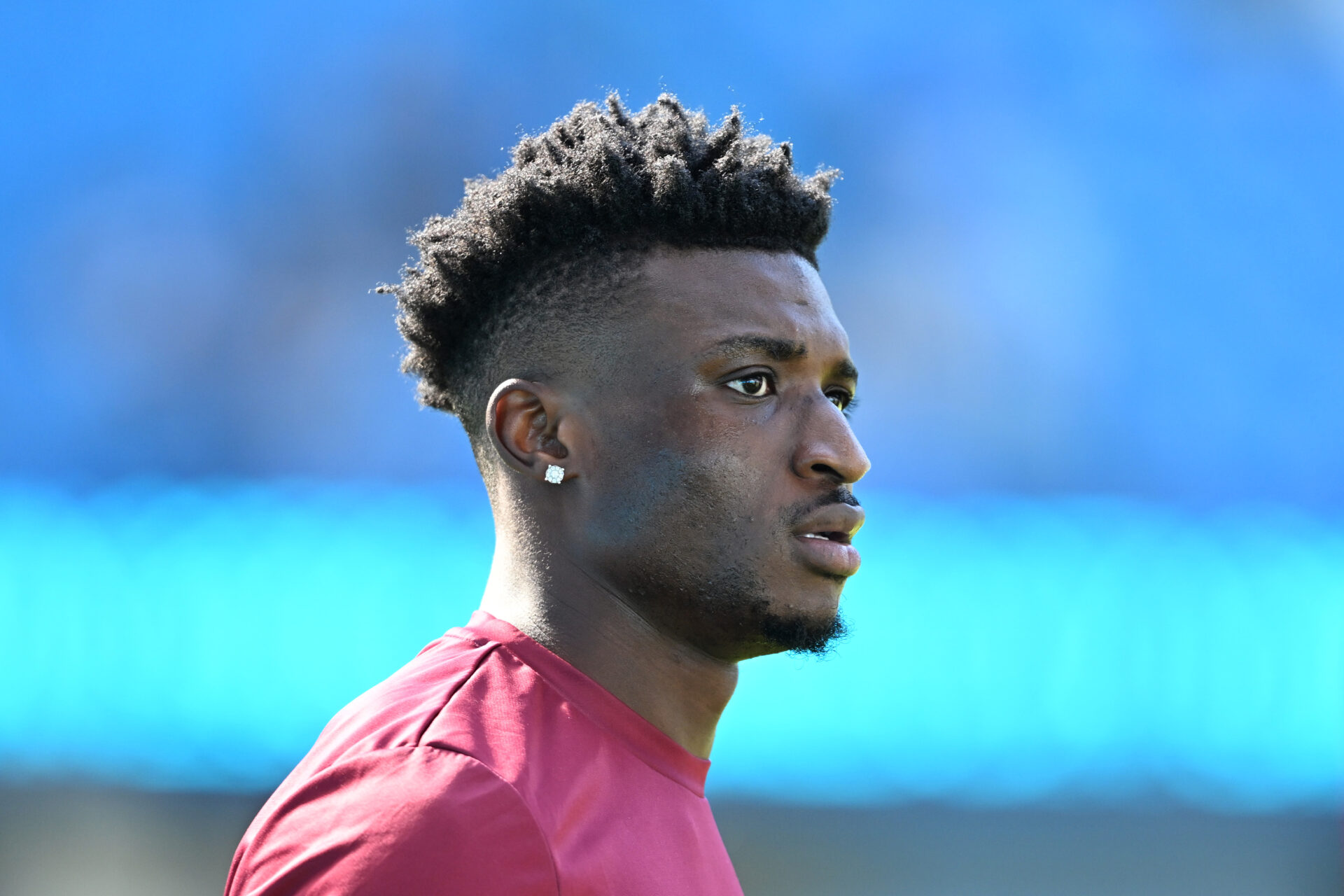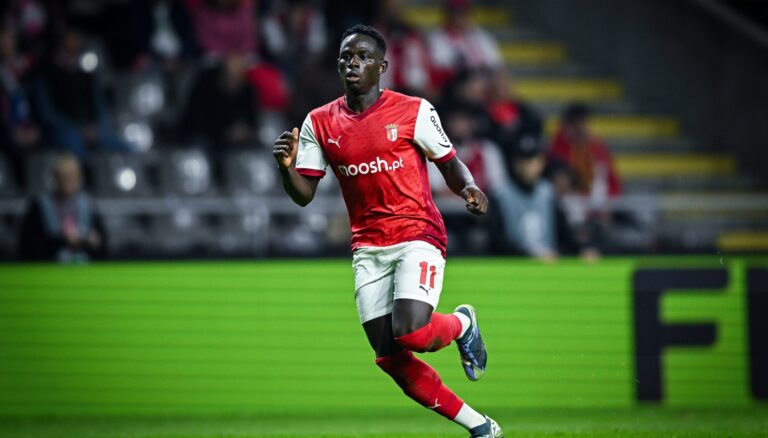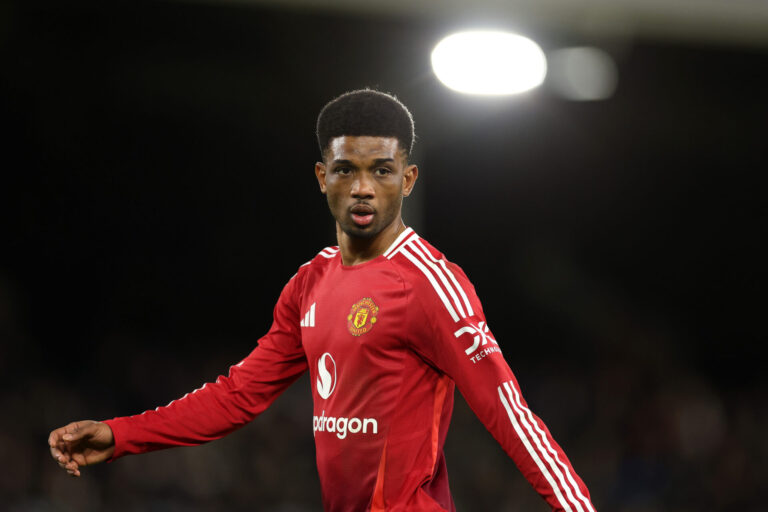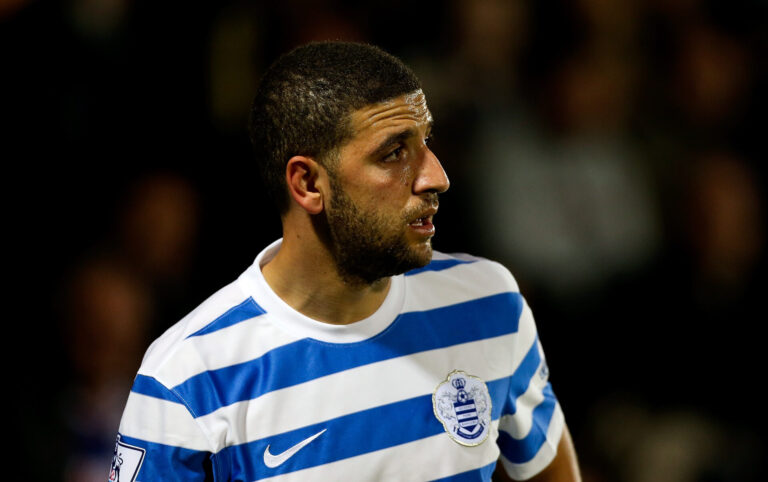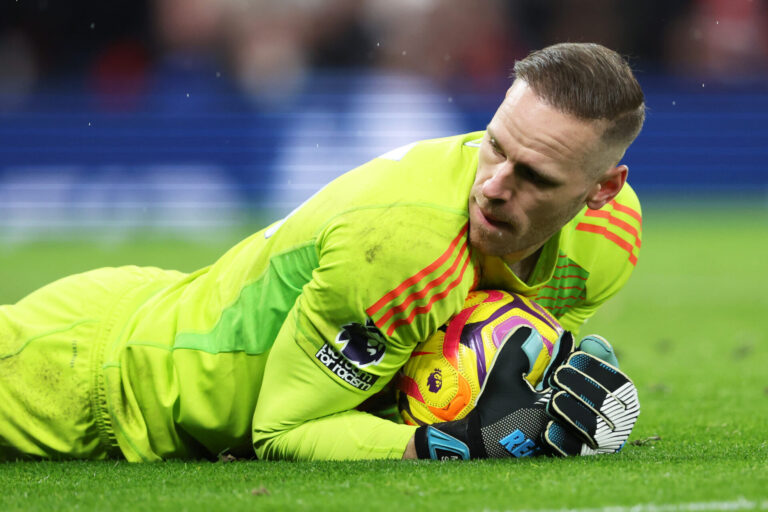Mohammed Kudus: From the Slums of Ghana to the Heights of the Premier League
Mohammed Kudus was on the verge of becoming the hero who dashed Manchester City’s hopes of a fourth title with an incredible acrobatic goal in the final league game of the season. However, that goal isn’t the only reason clubs, including Liverpool, who have already shown interest, are eager to sign him. The player has hit the ground running in the Premier League and has proved that he is already worth the reported £85 million release clause included in his West Ham deal.
I’ve been following Kudus since his days at Ajax, and it’s not just because we share the same first name. That’s why I decided to write this article, exploring the 23-year-old’s journey from the slums of Ghana to the Premier League’s spotlight and providing an analysis of his impressive skill set.
Mohammed Kudus: A Fairy Tale Ascent
Kudus grew up in a modest neighbourhood called Nima in Accra, Ghana, an area known for its gang violence. He was raised in a humble family, with his mother working in the local market, selling beans, rice, and ground pepper to provide for the entire family.
Now, how did Mo’s journey with football begin? Like many kids, Kudus took to the streets with his friends to play the beautiful game. It was on these streets that young Kudus dazzled other kids his age and even those older than him.
Watching him play, it was inevitable that Mo would join a football academy someday to hone his skills, and that’s exactly what happened when he joined the Dynamic Heroes football academy in Nima.
That was just the beginning, and at that point, Mo was a little kid with big dreams.
A Right to Dream!
Now, you’re probably aware of the Right to Dream Academy. If you aren’t, it’s a youth association system based in Ghana, founded by Tom Vernon, a former Manchester United scout in Africa, back in 1999.
The aim of this academy is to spot young African talents and provide them with a path to escape their harsh environments, acting as a bridge between African nations and European clubs.
Kudus’ talent was shining brighter than everyone else’s, and the Right to Dream Academy recognised this gem. That’s how he joined at the age of 12, leaving his family behind to pursue his dream.
The Big Leap & the Unexplained Treatment of Erik ten Hag
After six years at the Right to Dream Academy in Ghana, Kudus moved to FC Nordsjaelland in Denmark in 2018. Over two seasons there, he scored 14 goals and provided three assists in 57 appearances. More importantly, he showcased a level of versatility that even veteran players often lack!
In 2020, Kudus joined Ajax, where he finally made a name for himself. However, his emergence was stalled under the current Manchester United manager.
In his first two seasons under Erik ten Hag, Kudus had very limited game time. He played just 1,662 minutes but still managed to score 10 goals and provide four assists. Everyone could see his unbelievable talent. Still, ten Hag didn’t give the player the consistent game time he deserved. Yes, Ajax was successful under the manager, but there was a sense that Kudus’ talent was being wasted.
He was a literal engine on the pitch, helping the team both in and out of possession, which raised some questions about his limited game time.
Grabbing the Chance by the Scruff of its Neck!
In 2022, however, Kudus finally exploded on a gradually declining Ajax side following ten Hag’s departure.
He became a regular starter and one of the few bright spots in Ajax’s underwhelming season, emerging as a prolific goal scorer with 18 goals and seven assists. And if that wasn’t enough, he was Ghana’s standout player in the 2022 Qatar World Cup, scoring two goals against South Korea to help the “Black Stars” secure their only victory in the tournament.
These stellar performances earned Kudus the interest of multiple top clubs, including Arsenal and Chelsea. Initially, Brighton was on the brink of signing him, but after the deal collapsed, the Hammers surprisingly stepped in and secured his signature for around €40 million.
Of course, we all know the impressive season he’s had.
Despite being somewhat limited in David Moyes’ system, Kudus hit the ground running, scoring 14 goals and providing six assists across all competitions for West Ham. He also became the first player in the top five European leagues to reach 100 successful take-ons!
What Makes Kudus So Good?
So, what’s all the hype about? Why is Kudus already being linked with a move away from West Ham after a single season in the Premier League? That’s what I will be trying to explain as I analyse the player’s skill set for the remainder of the article.
A Swiss Army Knife
Looking at the positions Kudus has played across his career, one would struggle to identify his best spot on the field. He’s been deployed across the frontline and even as a central midfielder. And, if you look at the picture below, you’ll find that he even featured as a defensive midfielder! That was when he played a full 90 minutes in that position during his time in Danish football.

You might think it’s normal for a young player to try out different positions as managers figure out where he fits best. However, even this season for West Ham, Kudus has played in six different positions!

What’s even more impressive is how consistently he performs in all these different positions.
As a midfielder, he dominates opposition players with his physicality and intensity. On the wings, he effortlessly drives past his markers with his quick feet and dribbling skills. And as a striker, he possesses a lethal striking technique with either foot, making him a constant threat at the edge or inside of the box.
Kudus is a Swiss army knife type of player, and having him as part of a squad doesn’t just add a hungry and extremely talented player; it also provides the manager with numerous options for rotating the squad and multiple solutions to deal with different game states.
A “Pressing Monster”
There’s a key attribute that Kudus possesses that makes the links with a move to Liverpool logical: His pressing intensity!

His tackling numbers are up there among the best, as he ranks in the 95th and 99th percentiles for most tackles attempted and most tackles won, respectively. He also ranks high when it comes to tackles in the defensive and middle thirds, which highlights his ability to contribute defensively to the team’s deep and mid-block.
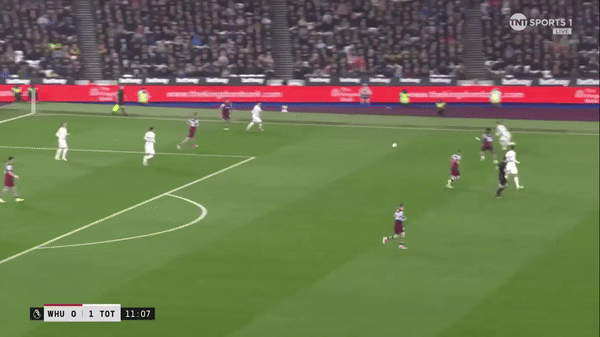
One might question his lower tackling numbers in the final third, but there’s a simple explanation for this: West Ham doesn’t press intensely, averaging just 16 passes per defensive action (PPDA) in the league. This puts them as the third-lowest team in this metric.
They also don’t play high up the pitch, with an average defensive line height of just 43.09 meters, which is 15th in the league. That’s why Kudus’s tackling numbers decrease in the final third.
Kudus also ranks in the 93rd percentile for tackles plus interceptions, and he averaged 7.75 loose ball recoveries per 90 minutes, putting him in the 99th percentile!
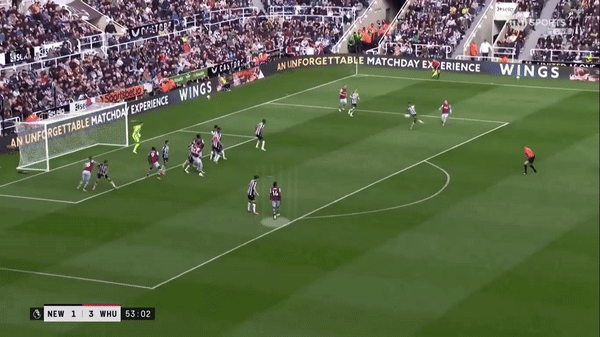
Whether a teammate loses the ball or Kudus himself does so, the player always showed that hunger to counter-press immediately, attempting to regain possession as fast as possible. He uses his pace and physicality to close in on the opponent, shielding the ball with his body and shrugging off players.

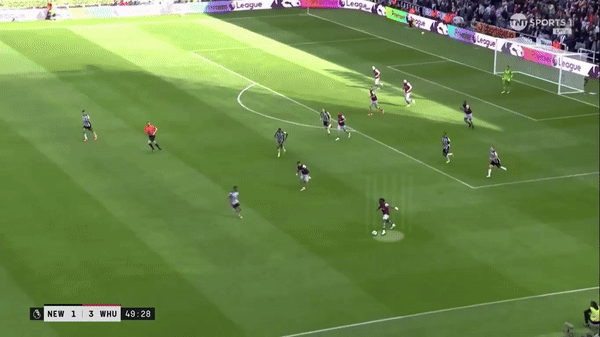
Now imagine Kudus playing in a team that presses intensely and high up the pitch! That would be a dream for any manager wanting to implement that style. And so, Kudus will undoubtedly “slot” into Slot’s system if the Reds end up signing him.
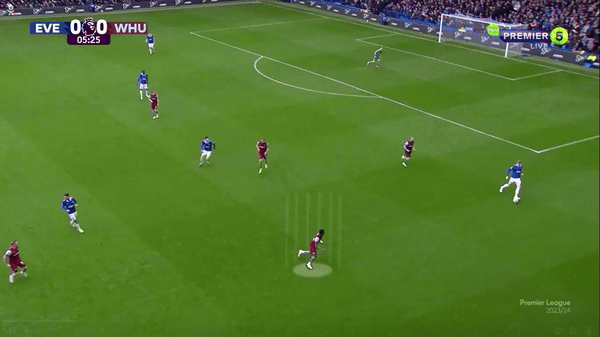
5 Star Skill Moves
I mentioned earlier that Kudus became the first player this season to complete 100 take-ons, so let’s dive deeper into his dribbling and ball retention skills.
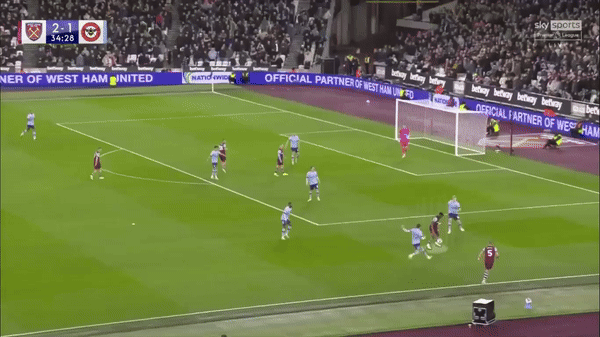
Looking at where Kudus ranks in terms of dribbles and offensive duels per 90 minutes compared to other wingers in the top seven European leagues, it is safe to say that the player is in the top three in these metrics.

His success rate is also amongst the elite, as he averaged 3.93 successful take-ons per 90 minutes, putting him in the 98th percentile!

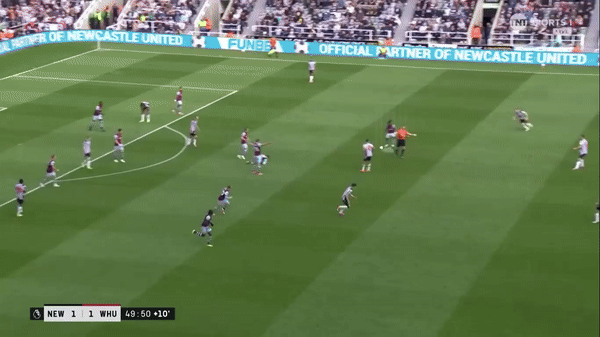
Some might question the effectiveness of the player’s take-on and dribbling; after all, what’s the point of all the silky moves and tricks if they do not affect the scoreline?
When it comes to goal and shot-creating actions, Kudus ranks in the high percentiles among other wingers in these metrics, specifically when it comes to his take-ons. This means that after attempting a take-on, Kudus usually ends up creating a shot or a goal for himself or his teammates!

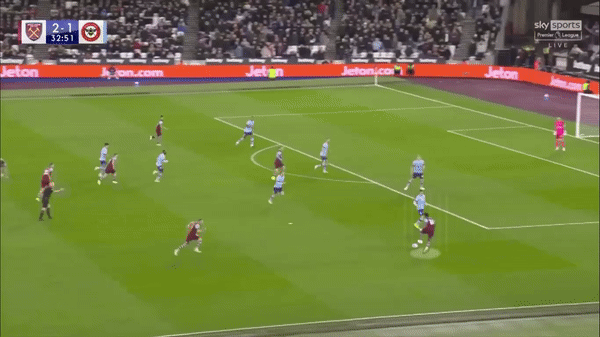
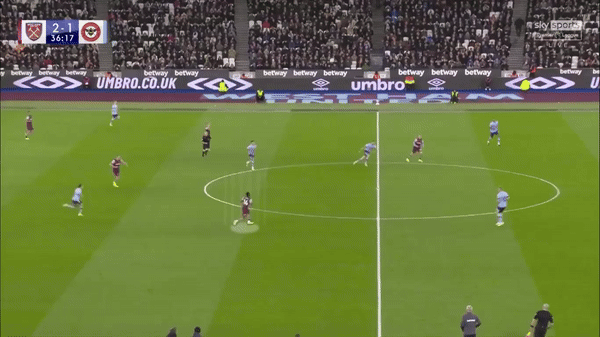
The player can swiftly change direction, slow down, and speed up again, surprising his markers with his agility. He uses quick feints to make it seem like he’s going one way, anticipating the defender’s reaction, then suddenly changes direction to go the other way.
This skill lets him either run along the byline to deliver a cross, hold up the play and combine with teammates, or cut inside to switch the play or take a shot when he’s in the final third.
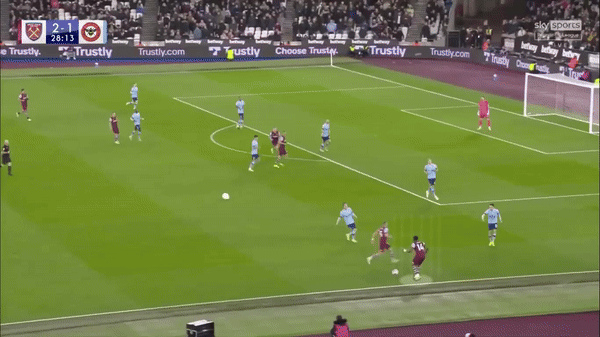
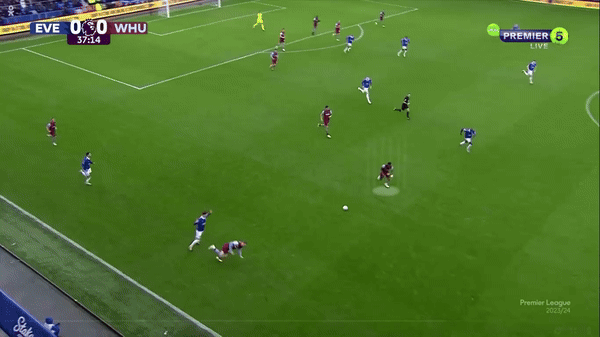
But that isn’t the only way that Kudus poses a threat after attempting a dribble. His slick movement and swift dribbling skills also make him a foul-drawing magnet.
He averages 2.51 fouls drawn per 90 minutes, putting him in the 86th percentile. Since West Ham heavily relies on set pieces, Kudus ranks in high percentiles for goal and shot creation from the fouls he draws.

His ability to dribble with both feet, change direction easily, and manipulate the ball so swiftly in tight areas is a nightmare for any defender facing him. He also uses his body to shield the ball in tight situations, making it tough for the opponents to dispossess him without committing a foul.
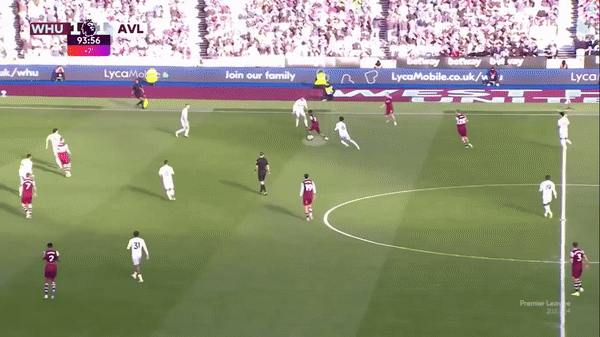
Once Kudus gets past his marker, he usually cuts in front of him, putting his body between the defender and the ball. Once he’s away, the defenders find themselves forced to commit a foul in order to stop him.
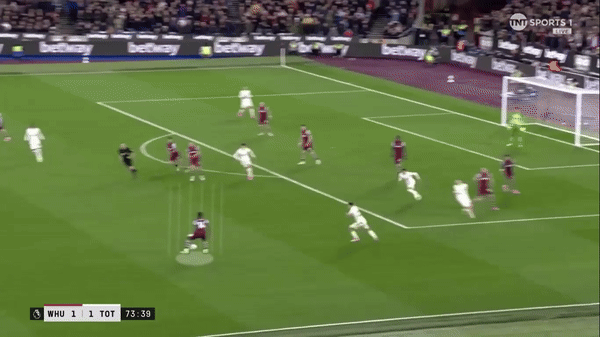
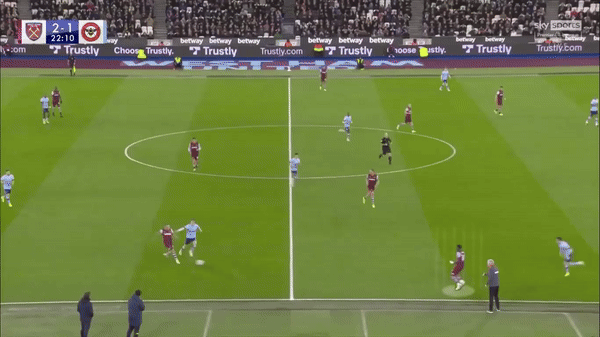

This sequence below has everything I mentioned so far: his work rate out of possession, his dribbling, and his cleverness in drawing fouls.
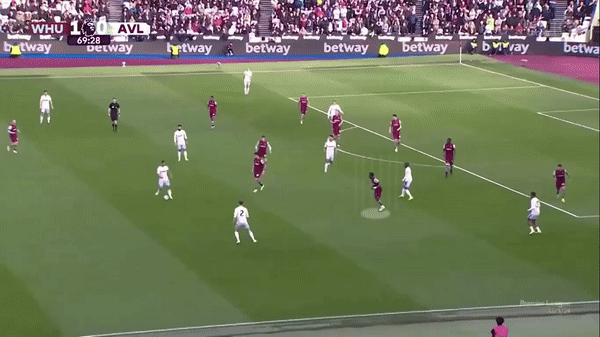
A Powerful Shooter, with Both Feet!
One more thing to highlight in Kudus’ skill inventory is his elite ball-striking ability.
Sure, he is left-footed, and he’s got a powerful and accurate shot with his strong foot. Some Liverpool fans might remember that monstrous strike he scored against them in the Champions League group stage back in the 2022–23 season.
Now, does this mean he’s one-footed? Absolutely not!
Just as he’s good at dribbling with both feet, his ball-striking ability is also impressive with his weaker right foot.
Four of his 14 goals this season for West Ham came from his weaker foot!

He can leather the ball in with either foot, like his goal against Newcastle, where he powered the ball through with his right foot. Or he can find the bottom corner with a deadly strike, just like he did against Wolverhampton with his strong foot, or his goal against Manchester United, where he perfectly placed the ball with a low-driven shot using his weaker foot.
With a 13% goal conversion rate, Mohammed Kudus ranks 24th among other wingers in the Premier League for this metric, which is not bad at all considering he’s playing for a miss-firing West Ham, which has the eighth-best attack with just 60 goals and the 13th most xG with just 52.3.

Slot’s Liverpool might be the logical step for the young player, with the club in search of a winger. Still, Mohammed Kudus will undoubtedly help elevate any side he joins. His versatility, work rate out of possession, dribbling skills, and elite ball-striking make him a unique player to have. His availability should also be mentioned, as he only missed six games in the last two seasons, two of them due to illness. And let us not forget that he is still 23 years old, with all the time in the world to develop.


